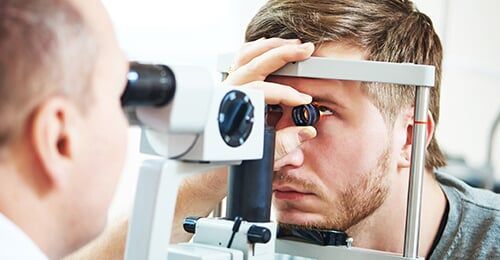EYE EXAMS
Maintaining good vision is ensured through regular, comprehensive eye examinations. Whether you need glasses or contacts, an examination by an ophthalmologist is a good idea. Eye examination includes:
- Measuring your eye pressure
- A retinal exam to view the back of your eye
- Examination of the front of your eye with a microscope
In addition to ensuring proper eyesight, regular eye examinations allow your eye doctor to detect and treat diseases at the earliest possible opportunity. Several eye diseases, such as glaucoma, show no symptoms in their early stages. A regular comprehensive eye examination can help detect diseases early, improving the likelihood for successful treatment.

FREQUENCY
It is important to have regular eye exams. Here are some general guidelines recommended by the American Academy of Ophthalmology:
Age 40 and under
Once every three years
Age 40 – 65
Once every two years
Age 65 and over
Annually
Diabetics
Annually
Some patients with certain ocular or systemic conditions may require more frequent examinations.
WHAT HAPPENS DURING MY VISIT?
Your eye doctor will ask you for information about your vision and health history, medications, symptoms of vision problems and other background information. Using a number of tests and medical instruments, your eye doctor will conduct an external and internal exam of the various parts of your vision system including the eyelashes, eyelids, conjunctiva, iris, lens, cornea, pupils, extra-ocular muscles, blood vessels, optic nerve and the retina. The eye doctor will assess the health of your eyes and look for vision problems such as glaucoma, cataracts and corneal diseases. The doctor will also look for ocular changes associated with systemic diseases such as diabetes, high blood pressure and neurological disorders. In order to perform a complete exam and look into the eye, we instill an eye drop that dilates the pupil which can cause light sensitivity and blurred vision especially up close. The effects of this eye drop can last 1-3 hours. This evaluation may also include a refraction, which determines whether you need prescription lenses or not.
Your eye doctor will make a final diagnosis and discuss a treatment plan designed specifically for you. The eye doctor will prescribe any necessary treatments such as corrective eyewear or medications.
 3939 W 50th Street, Suite 200, Edina, MN 55424
3939 W 50th Street, Suite 200, Edina, MN 55424











